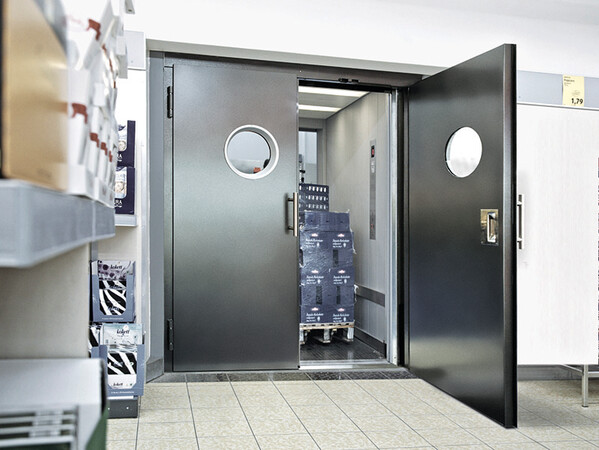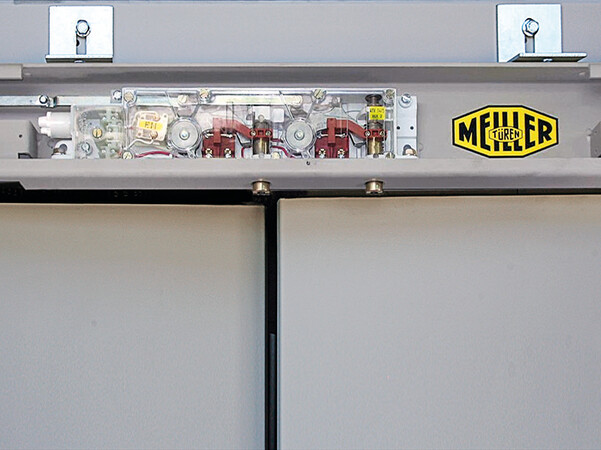The hinged door in lift building: an underestimated classic
Manual hinged doors in lift building – a relic of days gone by? Quite the contrary. This solution is more than just a niche product.
While some manufacturers have withdrawn from this market, Meiller continues to offer this product and according to the company, as a result is one of the "few remaining specialists for hinged doors."
Manual hinged doors used to be the standard solution for the lift sector. They featured advantages such as low space requirements, great flexibility and the possibility of individual adjustment to different car door versions. However, upon the introduction of new safety standards, such as EN 81-1/2 and EN 81-20/50 and the increasing demands on glazing and fire protection, the area of use of this door technology became progressively restricted.
The changes in technical standards impeded the use of hinged doors in lift building, which induced some manufacturers to withdraw from this segment. But Meiller has continuously invested in the further development of the hinged door to guarantee its adaptability to modern requirements and preserve its relevance to current lifts, the manufacturer stressed.
Current product improvements
 Photo: © Meiller
Photo: © MeillerThe product improvements in Meiller landing doors permit the easy replacement of existing individual hinged doors. The latest upgrades include the wireless power module (WPM) for the electric locking option and locking activation via a control wire. These innovations considerably simplify the renewal of damaged or defective doors at individual landings, the door manufacturer emphasised.
The touchless WPM actuation system permits inductive energy transmission to motor door locks and provides an alternative to the classic magnetic retiring cam. A transmitter on the car transfers energy to a receiver on the shaft side, which supplies the motor door lock DLF 1-MO with 24 V. As a result, the landing door unlocks – without a mechanical connection between the car and shaft.
The energy transfer occurs solely in the flush landing area, which ensures that unlocking only occurs once the car is in position. Usually, no change in the controller is needed, which simplifies retrofitting. This solution is especially advantageous in the case of hinged doors with complex lever roller drives or varying door heights as it eliminates elaborate mechanical adjustments. This retrofitting was dependent on the hinged doors being fitted with the DLF 1/2-MO door lock, according to Meiller.
More room for manoeuvre when converting existing structures
 Photo: © Meiller
Photo: © MeillerIn mechanical terms, the previous rod actuation has in addition been replaced by a control wire system. This can be flexibly adapted to local circumstances. This facilitates installation and leaves more room for manoeuvre in conversions.
Apart from this area of use, Meiller landing doors continue to be used in modern passenger, cargo and goods lifts – whether modernisation or new lift installations in existing shafts. Combined with a car closure using a roll-up door or lifting door, distribution according to all applicable standards and guidelines can be ensured. The hinged door also remains the preferred option for home lifts as landing closure.
Versatile deployment options
Due to the flexible combination options and adaptability to cramped spaces, the landing hinged door continues to have its justifications for particular applications. The continuous further development and versatile deployment options mean the hinged door remains as before a forward-looking solution in lift building.
The great demand for flexible, adaptable and standard-compliant door solutions means that the hinged door – contrary to expectations – is by no means a thing of the past. "On the contrary, it has established itself as a reliable alternative for the lift industry of the future," declared Meiller.
More information: meiller-aufzugtueren.de

























Write a comment